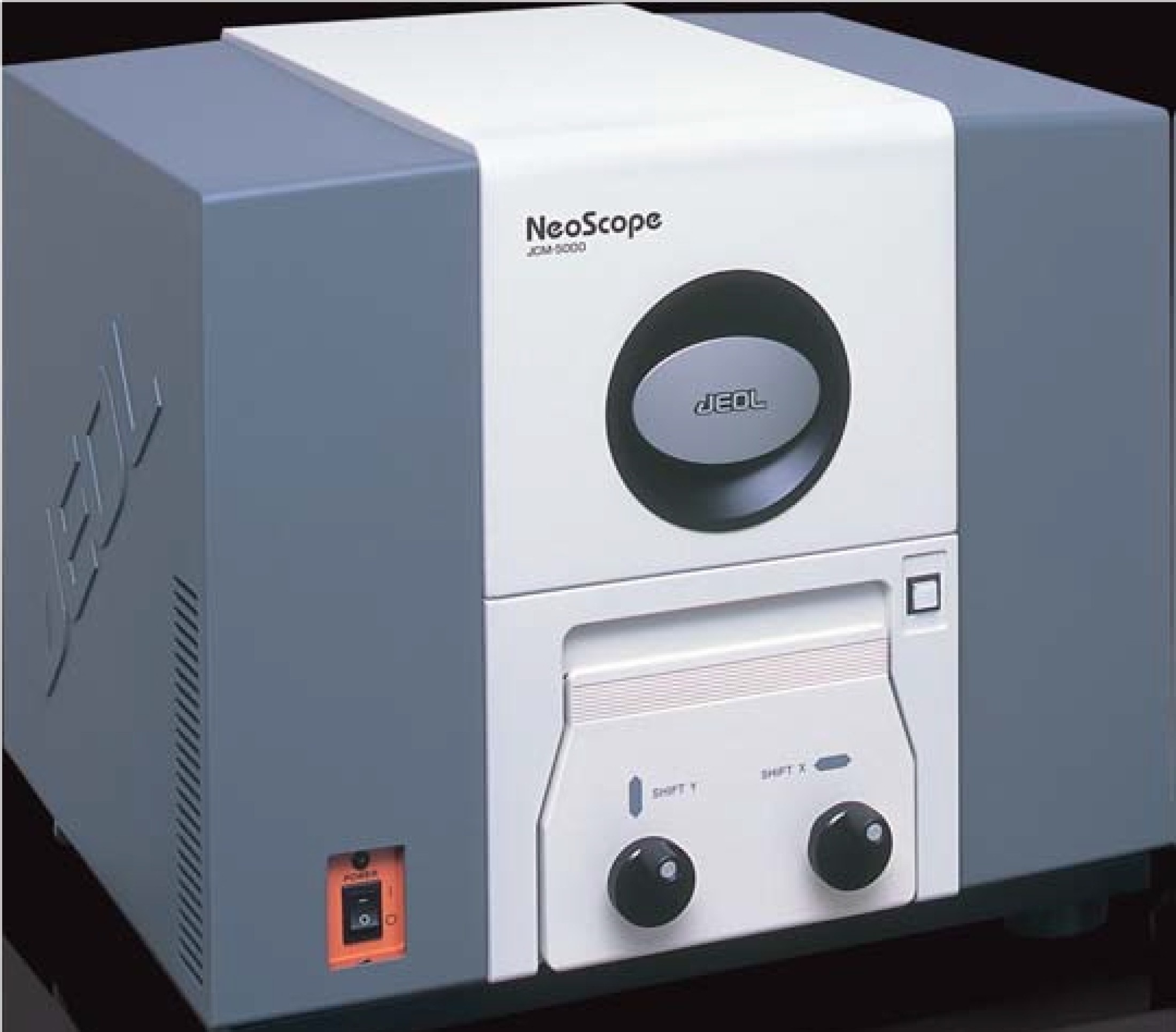The JEOL JXA-8530F Hyperprobe is an electron probe micro analyzer with field emission cathode. The instrument is equipped with five WDS spectrometers and two EDS detectors. Elements from Be to U can routinely be analyzed in 0.01 wt% concentrations (in some cases even below 100 ppm) at a lateral resolution reaching into the sub-micrometer range. The integration of special image and analysis software packages combined with the fully automated state-of-the-art instrument offer the user unique analysis possibilities.
Vacuum system: oil rotary pumps, turbo-molecular pump, sputter ion pumps, differential pumping
Ultimate pressure: FE gun chamber ~ 10-8 Pa, sample chamber ~ 10-4 Pa
Electron gun: Schottky field emission electron gun
Accelerating voltage: 1 – 30 kV
Magnifications: ×40 – ×300,000 (WD 11 mm)
Probe current: 10 pA – 0.5 µA at 25 kV
Resolution: 3.0 nm at Acc. V. 30 kV, 10 pA, WD 8mm, SEI
Image output: 8-bit, up to 5120 × 3840 pixels
Specimen stage movement: X 90 mm, Y 100mm, Z 7.5 mm
Specimen stage drive: minimum driving step size: X, Y: 0.02 µm/step, Z: 0.5 µm/step
Working distance: 11 mm
Integrated visible-light microscope: ½ inch CCD, reflected light, × 300, field of view 0.3×0.2 mm
Secondary electron (SE) detector: collector electrode, scintillator and photomultiplier tube
Backscattered electron (BSE) detector: Si P-N junction
Wavelength Dispersive X-ray Spectrometer (WDS) system:
- five linear focusing type spectrometers with automatic analyzing crystal exchange at any point
- X-ray take-off angle: 40°
- Xe-filled and gas-flow proportional counters
- seven analyzing crystals types: LDE1, LDE2, TAP, PETJ, PETH, LIF, LIFH
- detectable wavelength: 0.087 – 9.3 nm
- detectable/quantifiable element range: B – U
- type: 10 mm2 Si(Li) semiconductor, Peltier cooling
- detectable element range: B – U
- quantifiable element range: Na – U
- energy resolution: 138 eV or better (Fe, 5.9 KeV)
- WDS/EDS qualitative, quantitative analysis software
- WDS/EDS line and mapping analysis software
- Bruker XFlash 6/10 energy dispersive detector
- Bruker Esprit 2.1
- Bruker Esprit 2.1 software
- Probe for EPMA software
- Matrix corrections include ZAF, CITZAF, PRZ, PROZA. Heinrich, Henke and/or
empirical mass absorption coefficients, calibration curve, thin film methods
- Advanced background models for trace element analysis (Automated iterated polynomial fit MAN (corrected for absorption of the continuum) or off-peak background corrections (linear interpolation, average or single side and exponential fits) or any combination of background corrections within a single sample)
- Quantitative spectral interference correction for both major and trace element analysis
- Integrated Area-Peak-Factor (APF) correction for light element analysis
- Quantitative graphical volatile element correction for any or all elements using both calibration reference, and/or internally referenced "self" calibration
- Probe IMAGE software
- Monte Carlo simulation software (Casino, Penempa, CalcZAF):
- Modal image analysis software




